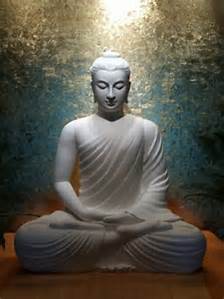Incorporating the 7 points into the daily meditation practice may deliver you into a “glowrious” day where all the great things you need will just fall on your lap, and it is because this technique connects you to the global magnetic alignment.
It brings you to a state of “activitylessness”, it places you in the higher unified field of “thoughtlessness”, and opens your body and heart to allow pure organic healing of its highest caliber. Whether you seek physical healing, mental relaxation, peaceful vibrations, or just want to discover a new way to joyous meditation, this practice is the one for you.
Its an excellent way to get your meditation practice started if you are new, and a powerful dedication to your already established practice if you are a practiced meditator.
From the moment of conception until the moment of death, mind and body are inextricably linked. Were it possible to separate them (it isn’t), one could say that they constantly affect each other. Most people understand that mind affects body, as they see examples of this all day long. The moment people come into a room, their posture tells us whether they are feeling good, depressed, self-confident, afraid, tense and so forth – long before they say a word. But few people realize just how much body and breath can be used to help the mind. As meditation is concerned with taming and awakening the mind, posture can be mobilized to great use.
Although one can think, visualise, pray or do mental exercises in any position, there are few in which can remain healthily and comfortably for the time it takes to accomplish most meditations. The few that permit this (lying flat etc) often tend make one sleepy as the meditation brings relaxation. This is not what meditation is for. In a good meditation posture, relaxation becomes the basis for the crystal clarity of awakened awareness, not a sleepy haze.
Although it may be hard for beginners to get used to a classical Buddhist meditation posture, the rewards of a few sessions with aching knees are tremendous, as one can meditate in that good position for the rest of one’s life. Correct posture helps the mind find peace, strength and control. It benefits the physical body by bringing its energies and bio-systems into balance. And one can spend all day in a classical posture in a state of great harmony – virtually impossible in everyday positions. Below you will find the classical 7-Point Posture of Vairochana, with some variations.
THE 7-POINT POSTURE OF VAIROCANA
1. The back (the complete line of the spine, from top of neck to the small of the back) should be made as straight as possible – like an arrow or like a pile of coins.
2. The legs should be crossed in the vajra or bodhisattva posture.
3. The hands should be ideally right hand over left, palms facing up, thumbtips against each other. Hands are to be about 4 fingers below the navel (without resting on the feet), the elbows slightly out. The shoulders are held up and back (‘like a vulture’)
4. The chin should be tucked in slightly, ‘like an iron hook’.
5. The eyes should be relaxedly looking into space, at nothing in particular, somewhere close to the tip of the nose and no more than a foot away from it.
6. The tongue should be held against the upper palate.
7. The lips should be slightly apart, the hint of a smile, the teeth not clenched.
Vajra posture – right leg is above left leg, the backs of the feet sitting flat on the tops of the thighs. Ideally, the two feet make a straight line. Bodhisattva posture – left sole fits under right thigh, back of right foot lies flat on top of left thigh.
The right hand sits on top of the left, 4 fingers’ width below the navel, the thumbs touching.


